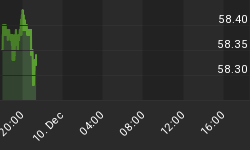Government spending is out of control and, while most say they want spending cuts, people oppose cuts that impact them. Among those who get government money, there's practically an unspoken, unbreakable pact to keep the money coming. But when I say that the national debt cannot be paid off, it's not a political forecast; it's a statement on the flawed nature of the dollar.
Astute observers call the dollar a fiat currency. Fiat means force. It's true that we're forced to use the dollar (e.g. by taxes on gold) but the dollar is also irredeemable. There's no way to cash it in. The dollar is credit that is never repaid. Today's dollar is a dishonored promise.
This was not always true. Before 1933, the dollar represented an obligation to pay 1/20 ounce of gold. People could deposit gold and get paper notes in receipt. Those notes circulated, and any bearer could redeem them for gold. Back then, $20 was not the gold price. It was the legal rate at which gold was deposited and redeemed.
In 1971, President Nixon changed the monetary system with the stroke of his pen, making the Fed no longer obligated to redeem dollars for gold. The consequences of using debt as if it were money were soon clear. Rising debt became a more serious problem than rising prices.
To understand debt, credit and the importance of redemption, consider Joe borrowing sugar from neighbor Sue. To pay Sue back, Joe goes to the store, buys sugar and hands it to Sue. Not only is Sue repaid; the debt goes out of existence -- it is extinguished. Borrowing money used to be like borrowing sugar. The repayment of debt in gold-backed dollars settled the loan and wiped the debt clean.
Not anymore, since Nixon detached the dollar from gold. By making people pay with paper-only dollars, each debt is transferred, not cleared.
Suppose Sue owed Joe $1,000, then hands Joe ten $100 bills. Sue gets out of the debt loop. But now the Fed owes Joe the $1,000. What does Joe do? He deposits his cash in a bank. Now the bank owes Joe money, while the Fed owes the bank. What does the bank do? It buys a Treasury bond. Now the Treasury owes the bank. And so on.
By Nixon's design, the system omits a crucial feature. The extinguisher of debt, gold, is not allowed to do its job. Debt can only be transferred from one party to another. It's like a lump being pushed around under a rug. With no means of final payment, that lump is never put in the trash. Debt is never extinguished.
In fact, the debt must increase, because the interest is constantly accruing. Interest is added to the debt, as it can't be paid off either. Total debt must grow by at least the interest. Debt actually increases faster than that, because the government craves what now passes for growth.
The rate of debt increase is proportional to the debt itself. It is not a fixed dollar amount, such as $100 billion a year. It is instead a percent of total debt. Mathematics has a term for this type of growth: an exponential function.
Exponential growth is not sustainable, according to credible scientists. Mainstream economists ignore this fact in the hope that that somehow growth can outpace debt, one year a time.
But exponentially rising debt is not sustainable because the capacity to service the debt is finite. Without a means of extinguishing debt, servicing is merely borrowing new money to pay off old debts. This is the equivalent of taking out a home equity loan to get money to pay the mortgage.
The U.S. debt is putting us in danger of economic catastrophe. Like Greece, which found no more buyers for their bonds, the U.S. relies on selling new bonds to pay interest and principal when due. The difference is that the whole world bids on U.S. Treasury bonds, for now. But eventually, market participants will realize that the American debt cannot be paid off.
















